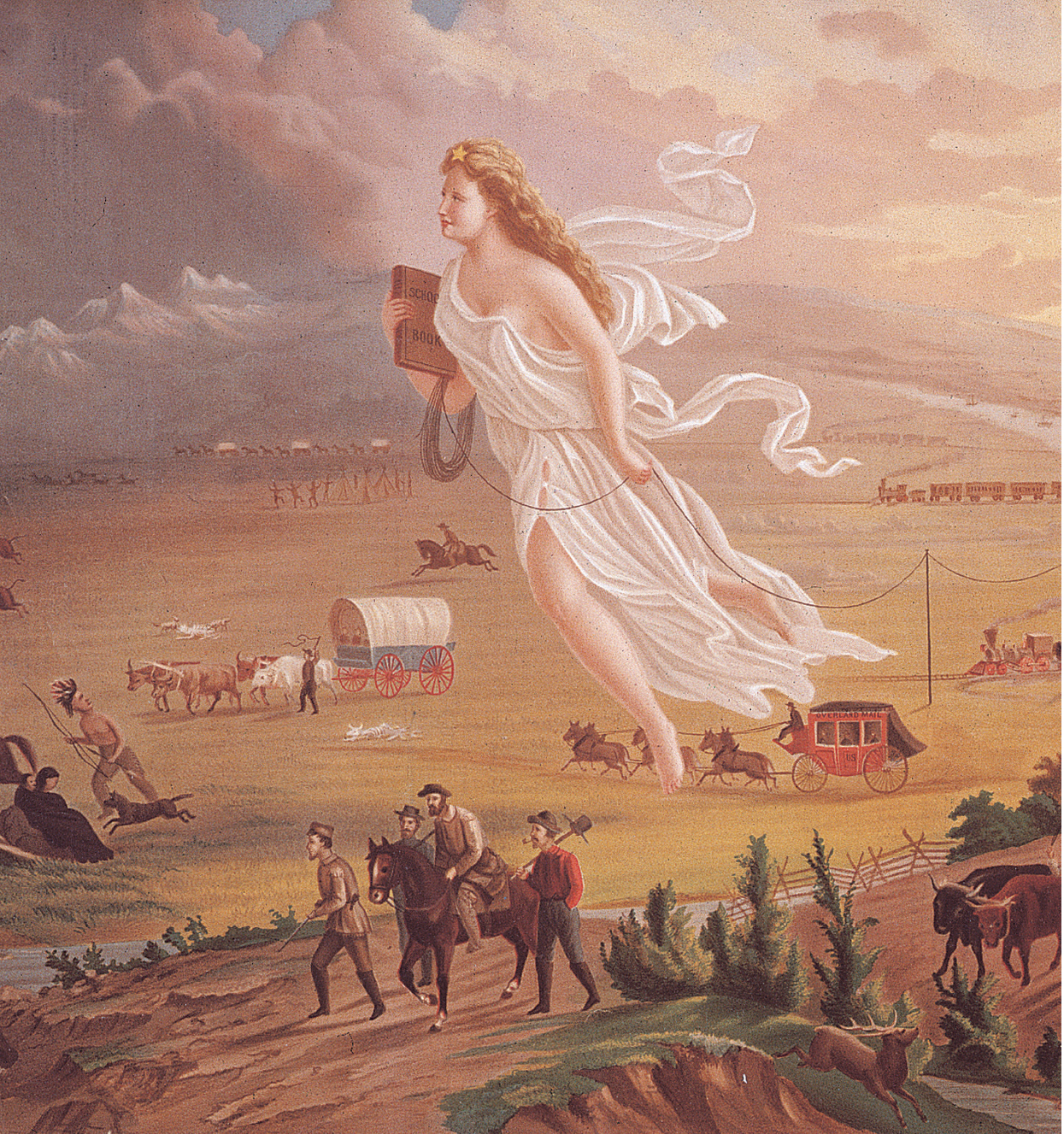America’s History: Printed Page 410
America: A Concise History: Printed Page 376
America’s History: Value Edition: Printed Page 364
Expansion, War, and
Sectional Crisis
1844–1860
13
CHAPTER
IDENTIFY THE BIG IDEA
What were the causes of the Mexican War, and in what ways did it bring about a growing sectional crisis during the 1850s?
The expansionist surge of the 1840s had deep roots. Since the nation’s founding in 1776, visionaries conceived its future both as a republic and as an empire, and they predicted a glorious expansion across the continent. “It belongs of right to the United States to regulate the future destiny of North America,” declared the New-York Evening Post in 1803. Politicians soon took up the refrain. “Our natural boundary is the Pacific Ocean,” asserted Massachusetts congressman Francis Baylies in 1823. “The swelling tide of our population must and will roll on until that mighty ocean interposes its waters.” However, the creation of a continental republic was far from inevitable. It would require a revolution in transportation — canals and railways — to access the nation’s fertile core in the vast Mississippi River basin and a growing population and dynamic economy to exploit its riches. By the 1840s, all those prerequisites were in place.

Other obstacles remained. Well-armed Indian peoples controlled the Great Plains, Mexico held sovereignty over Texas and the lands west of the Rocky Mountains, and Great Britain laid claim to the Oregon Country. To extend the American republic would involve new Indian wars and possibly armed conflict with Great Britain and with Mexico (and perhaps France, its main creditor). An ardent imperialist, President James Polk willingly assumed those risks. “I would meet the war which either England or France … might wage and fight until the last man,” he told Secretary of State James Buchanan in 1846.
Polk’s aggressive expansionism sparked fighting abroad and conflict at home. A war with Mexico intended to be “brief, cheap, and bloodless” became “long, costly, and sanguinary,” complained Senator Thomas Hart Benton of Missouri. Even Polk’s great territorial acquisitions — New Mexico, California, the Oregon Country — proved double-edged by reigniting a bitter debate over slavery. Northerners vowed to prevent the expansion of bound labor into the newly acquired territories, prompting southerners to threaten secession from the Union. Rhetoric spiraled downward into violence, as white and black abolitionists attacked slave catchers in the North and secessionists harassed Union supporters in the South. When Massachusetts senator Charles Sumner accused his South Carolina colleague Andrew P. Butler of taking “the harlot slavery” as his mistress, a southern congressman beat Sumner unconscious with a walking cane. As this violence shook Washington in 1856, proslavery migrants fought armed New England abolitionists in the Kansas Territory. Passion had replaced compromise as the hallmark of American political life.